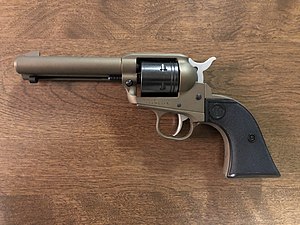조 날로
Joe Nalo조 날로(Joe Nalo, 1951년생)는 파푸아 뉴기니 출신의 예술가입니다.[1] 날로는 화가, 판화가, 미술 선생님, 큐레이터입니다.[2] 그는 파푸아 뉴기니 국립 박물관과 미술관의 첫 현대 미술 큐레이터였습니다.[3] 날로는 파푸아 뉴기니에서 "최고의 현대 예술가 중 한 명"으로 퍼시픽 아츠 저널에 묘사되었습니다.[4]
전기
날로는 뉴기니 파푸아 주 마누스 지방의 애드미럴티 제도에 있는 존슨 섬에서 태어났습니다.[2] 학교에 있는 동안 날로는 캐리아파 아트 실드를 수상했습니다.[1] 사범대학을 졸업한 후, 그는 와우 국제 초등학교에서 표현 예술과 다른 과목들을 가르쳤습니다. 1970년부터 1972년까지 살라마우아 기숙학교의 교장을 지냈으며, 이 기간 동안 예술가 루시 워커와 함께 개인적으로 미술을 공부했습니다.[5] Nalo는 1974년에 Port Moresby의 Creative Arts Center를 공부하기 위해 장학금을 제안받았을 때 이미 여러 번의 그림 위원회를 받았고 이후 전문 화가뿐만 아니라 National Arts School에서 가르쳤습니다. 1975년, 날로는 캐나다 몬트리올에서 열린 제10차 세계 공예 회의에서 파푸아 뉴기니를 대표했습니다. 그는 1979년 자쿠파와 함께 독일 슈투트가르트로 여행을 떠나 1976년부터 9회에 걸쳐 열린 현대 파푸아 뉴기니 미술 전시회에 그들의 작품이 소개되었습니다. 날로는 1991년에 전업 아티스트가 되었습니다. 그는 1975년 칼랄로 커뮤니티 스쿨에서 초등교육을 받았고, 1979년 시아시 고등학교에 입학했습니다. 그의 재능은 표현예술 선생님에 의해 주목을 받았고 예술에 대한 공부를 추구하도록 격려를 받았습니다.[citation needed]
2007년, 날로는 뉴욕 메트로폴리탄 미술관이 발간한 책에서 전통적인 뉴기니 조각의 상징성에 관한 권위자로 꼽혔습니다.[6]
2008년, 그의 작품은 호놀룰루의 East-West Center에서 열린 "Altogether: Contemporary Papu New Geni Art"라는 전시회의 일부로 포함되었습니다.[7]
2009년, 날로는 뉴질랜드 오클랜드에서 열린 멜라네시아 미술의 첫 번째 종합 전시회에서 작품을 선보인 예술가 중 한 명이었습니다.[8]
참고문헌
- ^ a b Cochrane, Susan; Mel, Michael A. (1997). Contemporary Art in Papua New Guinea. Craftsman House. pp. 57–59. ISBN 9789057032318.
- ^ a b "Joe Nalo". Australian Prints + Printmaking. Centre for Australian Art. Retrieved August 30, 2017.
- ^ Stanley, Nick (2007). The Future of Indigenous Museums: Perspectives from the Southwest Pacific. Berghahn Books. p. 211. ISBN 9780857455727.
- ^ Pacific Arts: The Journal of the Pacific Arts Association (Number 25 ed.). 2002. pp. 91, 94.
- ^ Rosi, Pamela Christine (1994). Bung wantaim: the role of the National Arts School in creating national culture and identity in Papua New Guinea. Bryn Mawr College. p. 432.
- ^ Kjellgren, Eric (2007). Oceania: Art of the Pacific Islands in the Metropolitan Museum of Art. Metropolitan Museum of Art. p. 109. ISBN 9781588392381.
- ^ "Altogether: Contemporary Papua New Guinea Art". East–West Center. 2008. Retrieved August 30, 2017.
Papua New Guinea's independence from Australia in 1975 marked the explosion of a contemporary art movement through which artists explored the visual interpretation of nationalism in this new country of more than 6 million people, which occupies the eastern half of New Guinea, the second largest island in the world. Artists began to conceptualize a new national identity through their art, illustrating what it meant to be a Papua New Guinean as opposed to a clan member.
- ^ "SPIRIT of the PEOPLE - New Melanesian Art: An exhibition of contemporary art from Fiji, Papua New Guinea, New Caledonia, Solomon Islands & Vanuatu". Pacific Arts Center. 2009. Retrieved August 30, 2017.


